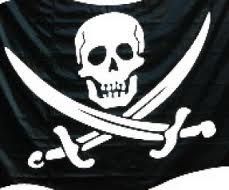
An international group for seafarers’ concerns said the total costs of seafarer piracy in 2010 range from $7 to $12 billion.The One Earth Future Foundation’s (OEF)
Oceans Beyond Piracy project did the estimates, with insurance premiums topping the list of costs in the range of $460 million to $3.2 billion.
War risk and kidnap-and-ransom types of insurance made up the most significant premiums that shipowners purchase, especially if ships pass through the Gulf of Aden.
Filipino seafarers are common hostage victims of seafarer piracy, especially by Somali pirates.
OEF’s estimate for insurance was calculated by getting a low-bound estimates (of 10 percent of ships purchasing these insurance premiums) and an upper-bound estimates (70 percent of ships).
The re-routing of ships provided the next highest excess costs of seafarer piracy at $2.4 to $3 billion — especially for low and slow-moving ships that were remarked to be avoiding risk zones (especially the Gulf of Aden) as a “safer or cheaper option," OEF wrote.
Purchasing security equipment cost an excess of $363 million to $2.5 billion, as ship owners prepare their ships with security equipment and having guards prior to transiting to a high-risk zone.
Naval operations off the coast of Somalia cost the shipping industry $2 billion, as the money is spent on the costs of naval vessels and the administrative and staffing budgets of the world’s big three naval operations (Operation Atalanta, Operation Ocean Shield and Combined Task Force 151).
Ransoms cost the shipping industry some $148 million in 2010, OEF said. The OEF report added that ransoms paid to Somali pirates have increased from an average of $150,000 in 2005 to $5.4 million in 2010.
A South Korean oil tanker, MT Samho Dream (owned by Samho Shipping Co. Ltd.), paid the highest ransom in 2010: $9.5 million. The said ship had around 50 Somali pirates — armed with AK47s, 45-caliber pistols, and rocket propeller grenades — hostaging last April 4, 2010 the ship’s crew, including 19 freed Filipinos.
Prosecuting pirates have cost the industry some $31 million, with over 750 Somali pirates have been tried for piracy or are awaiting trial in more than 11 countries.
The prosecutions, OEF wrote, are being done in Africa and the Indian Ocean, Europe, and North America.
There have also arisen anti-piracy organizations, an excess cost of around $19.5 million. Regional economies such as Egypt, Kenya, Yemen, Nigeria and Seychelles have also lost $1.25 billion to seafarer piracy.
All in all, the $7-to-$12 billion estimated excess costs of piracy is “not a definitive result but an approximation," OEF said.
Yet the group is calling on the international community “to develop a global response that deals comprehensively with deterrence, suppression, and prosecution of piracy".
OEF’s report wrote that around 500 seafarers from 18 countries (including Filipinos) were hostaged by pirates. The Oceans Beyond Piracy research analyzed the cost of piracy that’s happening at the Horn of Africa, Nigeria and the Gulf of Guinea, and the Malacca Straits.
But the report’s focus was on the Somali piracy since that carried the most number of piracy incidents.
The Department of Labor and Employment recently collaborated with the global advocacy group Save-Our-Seafarers, run by chair Giles Heimann.
“It is terrible, and completely unacceptable, that ordinary people going about their everyday work should have to encounter such horrors," Heimann said at a recent press conference.
"There are more than 100,000 seafarers at any one time either preparing to go through the Gulf of Aden, or transiting its waters. Taking their families’ feelings into account, you have half a million people everyday gripped by fear due to Somali piracy," he added.
Source: GMA News
We use cookies to improve your experience. By continuing to use our site, you accept our Cookies, Privacy Policy,Terms and Conditions. Close X